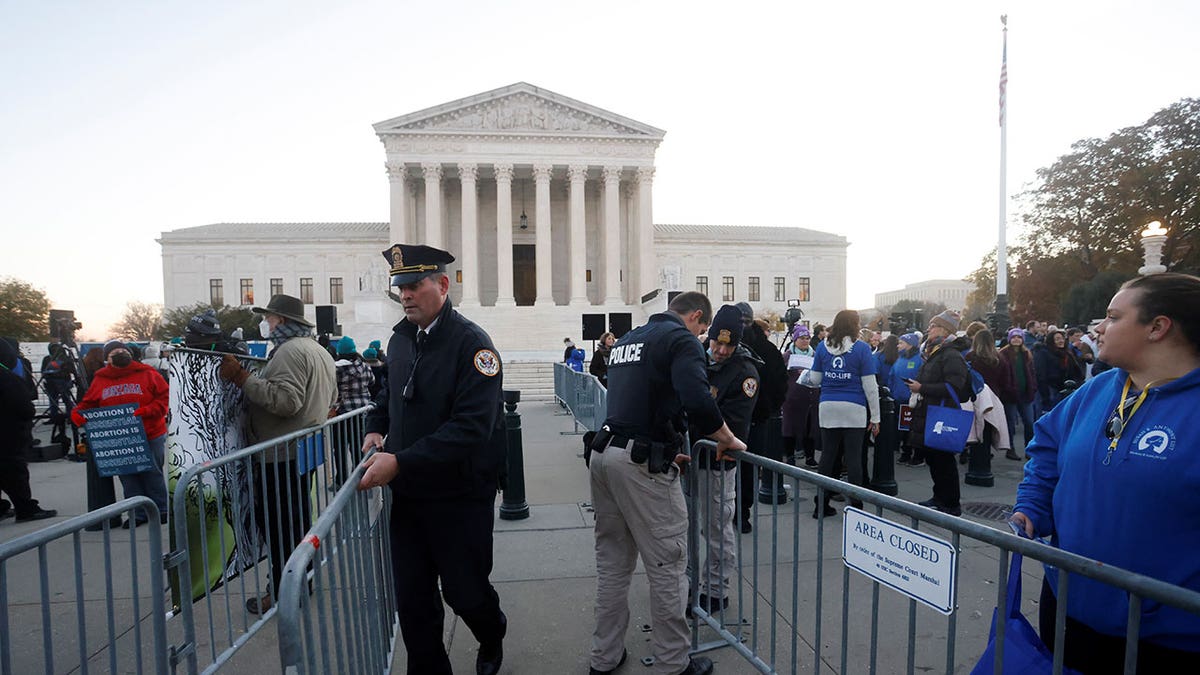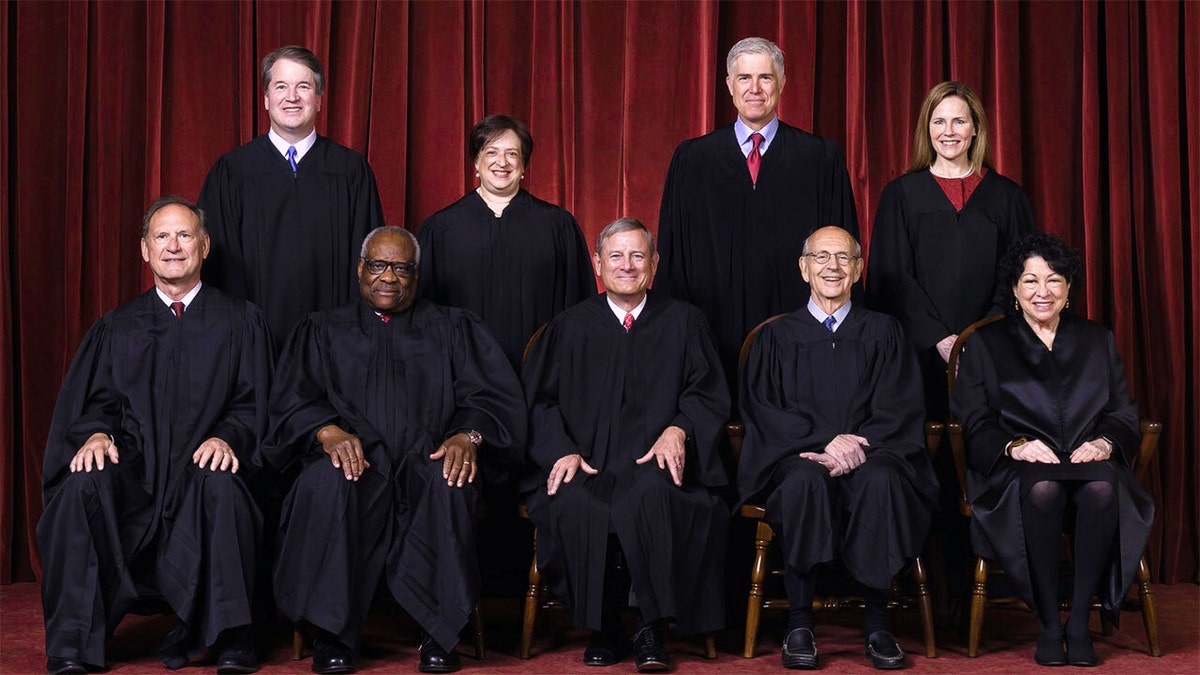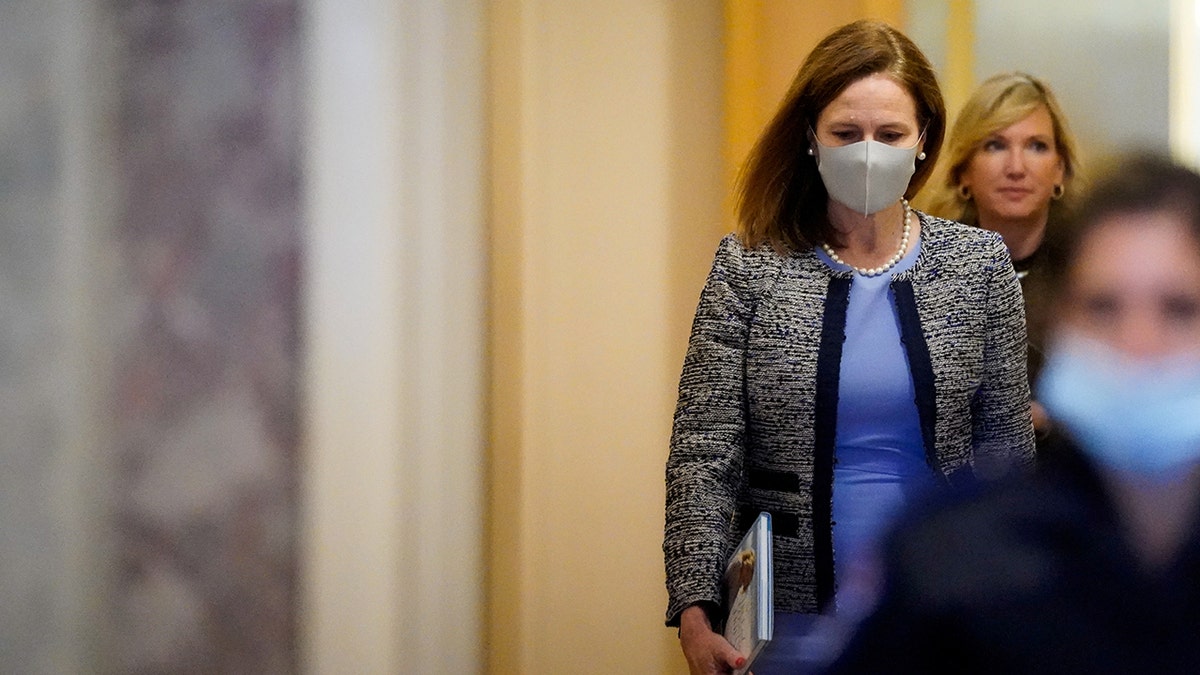Supreme Court debates abortion rights case challenging Roe v. Wade
'Special Report' panel breaks down legal arguments over the Mississippi abortion law.
None of the Supreme Court justices came to Wednesday’s oral argument in Dobbs v. Jackson Women’s Health Organization unaware of the outsized role the abortion issue has played in our politics and in the place of the Supreme Court in American life ever since Roe v. Wade was decided in 1973.
They also know firsthand how the issue has poisoned the judicial nomination process. Justices Clarence Thomas and Brett Kavanaugh underwent a level of personal vilification unlike anything else to be seen over the last century of Supreme Court nominations. For that we can thank Roe.
SUPREME COURT ABORTION CASE: 5 KEY MOMENTS FROM ORAL ARGUMENTS
Roe dictated to all 50 states a right to abortion on demand not discernible from the text or history of any provision of the Constitution. Its baselessness as a piece of constitutional law has been well established and widely acknowledged by scholars across the political spectrum.

Supreme Court police officers erect a barrier between protesters outside the court building, ahead of arguments in the Mississippi abortion rights case Dec. 1, 2021. (REUTERS/Jonathan Ernst)
The same is true of Planned Parenthood v. Casey (1992), which reworked Roe by discarding its trimester framework and setting the viability line as the relevant standard. That line is at issue in Dobbs, where the court must consider whether Mississippi could draw a pre-viability line at 15 weeks.
Could the court uphold the Mississippi law in a way that just rewrites Roe/Casey to provide for an earlier abortion right defined by some other line? Casey had replaced Roe’s exercise in hapless line-drawing with another.

Anti-abortion rights activists protest outside the Supreme Court in Washington, Dec. 1, 2021. (REUTERS/Jonathan Ernst)
The current court would commit grave error in Dobbs if it replicated Casey’s gamesmanship with yet another baseless exercise in line-drawing. In other words, the only principled outcome here is for the court to overrule those two precedents, which are as unprincipled as any cases decided within living memory.
Interestingly, the attorneys arguing against Mississippi’s law effectively reinforced this notion by pushing back on the idea that there could be any other acceptable line besides viability. In other words, there are no grounds for a half-baked decision.

Members of the Supreme Court on April 23, 2021 Seated from left are Justices Samuel Alito and Clarence Thomas, Chief Justice John Roberts, Justices Stephen Breyer and Sonia Sotomayor, Standing from left are Justices Brett Kavanaugh, Elena Kagan, Neil Gorsuch and Amy Coney Barrett. (Erin Schaff/The New York Times via AP, Pool)
For that matter, what the court’s three liberal justices – Stephen Breyer, Elena Kagan, and Sonia Sotomayor – had to say was remarkably devoid of legal analysis and almost entirely devoted to arguments of policy or the political effects of overturning precedent. Of course, the same can be said for Roe and Casey themselves.
Sotomayor’s histrionics were particularly rich. She asked, "Will this institution survive the stench that this creates in the public perception that the Constitution and its reading are just political acts?" As if she and her liberal colleagues have not toppled precedents they want to overturn as readily as a blowtorch goes through tissue paper.

Justice Sonia Sotomayor arrives for the presidential inauguration at the U.S. Capitol Jan. 20, 2021. (Win McNamee/Pool Photo via AP)
Fortunately, a majority of justices seemed to grasp both the illegitimacy of Roe and Casey and the baselessness of the idea that precedent must stand no matter how wrong it was. "Egregiously wrong" is the phrase used by Justice Brett Kavanaugh in his exposition on precedent that deserves to be overruled in Ramos v. Louisiana last year and by Justice Samuel Alito during Wednesday’s oral argument.
Of course, such clearly wrong precedent should not stand just because the context is abortion. Even Chief Justice John Roberts, who was sometimes hard to read during argument, expressed skepticism about the court’s drawing of the viability line and about Casey’s rationale for hesitating to overrule Roe.

In this Jan. 16, 2020, file photo Chief Justice John Roberts walks to the Senate chamber at the Capitol Jan. 16, 2020. (AP Photo/Matt Rourke, File)
Justice Amy Coney Barrett similarly asked whether there should be "a different set of rules" in assessing precedent when the subject matter is "what the court might decide is a watershed decision."
Barrett also expressed skepticism toward the argument that women rely on abortion rights for "access to the workplace and to equal opportunities" that would otherwise be denied them. Although "both Roe and Casey emphasize the burdens of parenting," there are now in all 50 states "safe haven" laws allowing parents to terminate their parental rights soon after birth. "Why don’t the safe haven laws take care of that problem?" she asked.

Justice Amy Coney Barrett walks through the U.S. Capitol in Washington on Oct. 19, 2021. REUTERS/Elizabeth Frantz
Justice Kavanaugh did an excellent job articulating that the court’s constitutional role is not to pick winners and losers on divisive issues like abortion, but to remain "scrupulously neutral."
CLICK HERE TO GET THE OPINION NEWSLETTER
As he summarized the position against Roe and Casey, "the Constitution's neither pro-life nor pro-choice on the question of abortion," so that issue "should be left to the people, to the states, or to Congress."
CLICK HERE TO GET THE FOX NEWS APP
The way that works out will look different in different states, but the court should let the people decide.





















